Sindh was once the cultural hub of the region and Thatta was the capital of the province before the capital was moved to Hyderabad and then Karachi. As such, the city has seen influences from many different rulers, each leaving their mark on this timeworn town. If you’re heading towards Thatta on a day’s exploration, one place you must visit is the Makli Graveyard. Another site worth visiting is the Shah Jahan Mosque in Thatta, which is located close to the graveyard and is a 17th-century marvel.
Location of the Shah Jahan Mosque in Thatta
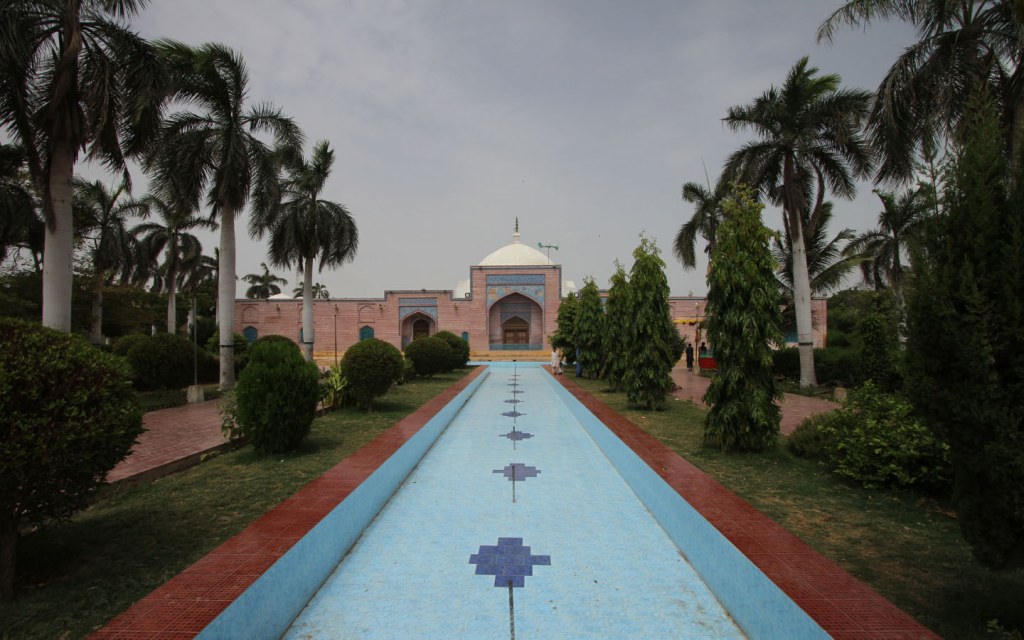
Located on the eastern edge of Thatta, the Shah Jahan Mosque is situated close to the National Highway (N5) at its intersection with Sujawal-Thatta Road. It is located approximately 100 kilometres away from Karachi. An exterior garden and a fountain lead the way to the mosque’s main entrance.
History of the Mosque and Its Current Status
The Shah Jahan Mosque acts as the Jamia Mosque for Thatta. The mosque’s construction began in 1644 under the orders of the Mughal Emperor Shah Jahan while he resided in Thatta after fleeing from his palatial home following a dispute with his father, Emperor Jahangir. The mosque was built over a period of three years and was officially opened for the public in 1647.
It was meant to be a gift for the people of Thatta to thank them for their hospitality when they had opened their homes and their hearts to host Shah Jahan during his brief stay here. The mosque has been on the tentative list of UNESCO World Heritage Sites since 1993 but has not officially been declared as a preserved landmark.
Construction of the Shah Jahan Mosque in Thatta
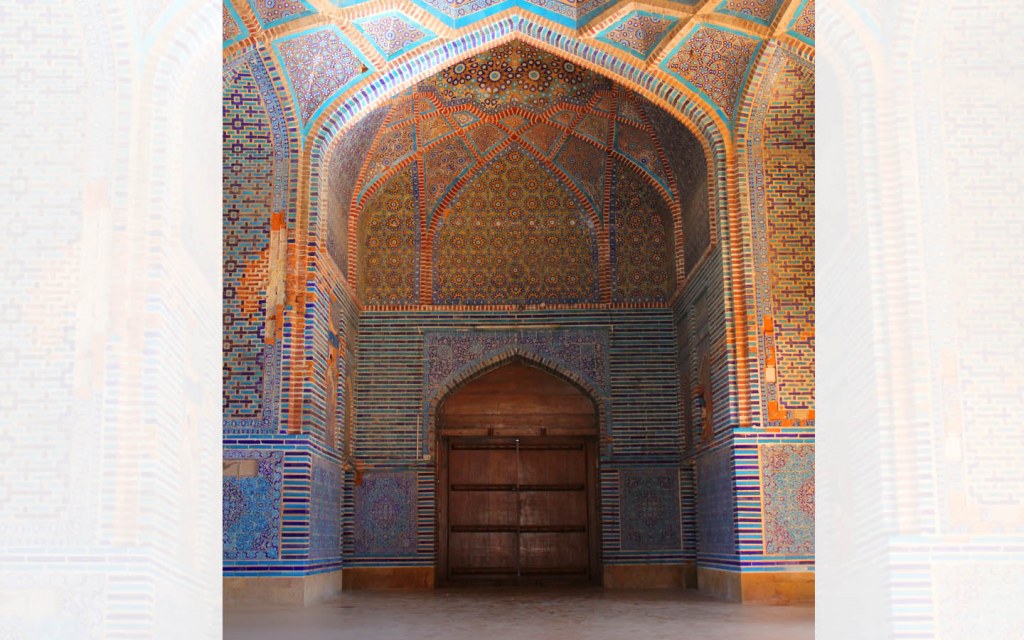
The Shah Jahan Mosque is one of the few Mughal-era mosques in Pakistan that depict a construction style that is reflective of that era. However, this particular mosque was influenced not just by Mughal architecture but also by Sindhi, Persian, Timurid, and Indian styles of construction that have made it a unique marvel.
Characteristic red bricks have been used to build the mosque, but it is the tile work and geometric patterns that enhance its beauty. Even without the use of frescoes, which are generally found in most Mughal-era constructions, the walls, domes, arches, and doors all have an innate beauty due to the patterned tile work and the calligraphy etched into them in Persian and Arabic.
The mosque boasts the most domes in any structure in Pakistan, with the total varying between 93 and 100, while the official plaque states the count to be the latter. Built at a time when modern technology was non-existent, the mosque and its archways are built in a manner that allows air to pass through the entire structure, ensuring that the people who come for their prayers do not feel suffocated or stuffy.
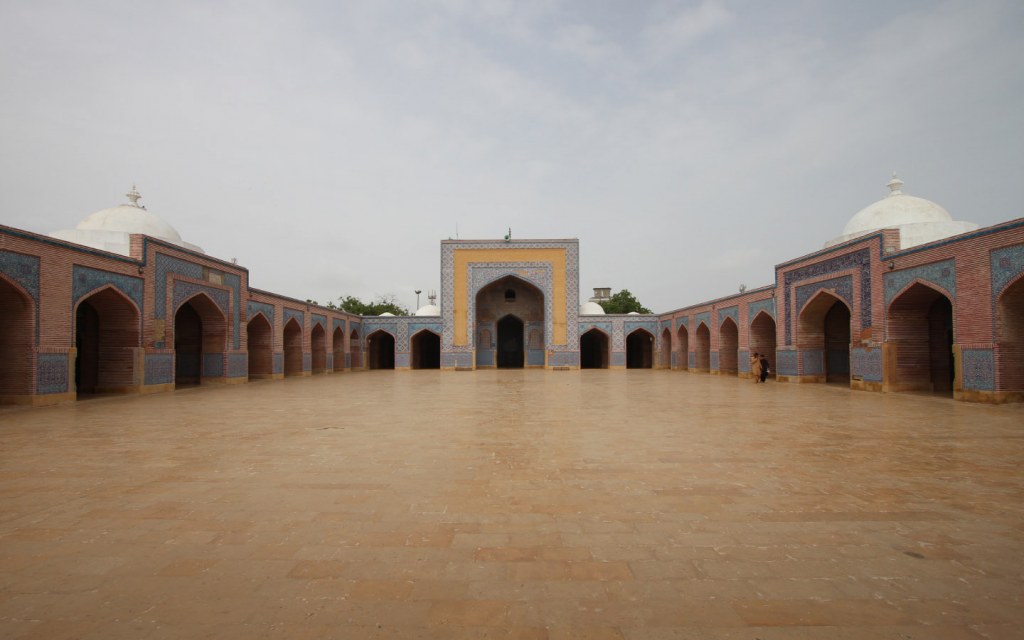
What’s more, the interior of the mosque is built in such a manner that the prayers can be heard from the Mihrab of the mosque to the other end of the structure with the use of echoes, rather than making use of any voice amplifying techniques. A central courtyard leads to the main prayer hall, with its boundaries marked using arched corridors. The corridors open up into the courtyard in the form of 33 arches, while four doors also lead outward from the corridors, one facing each of four directions. Thus, the mosque has four exterior and one interior door, leading to the main prayer hall.
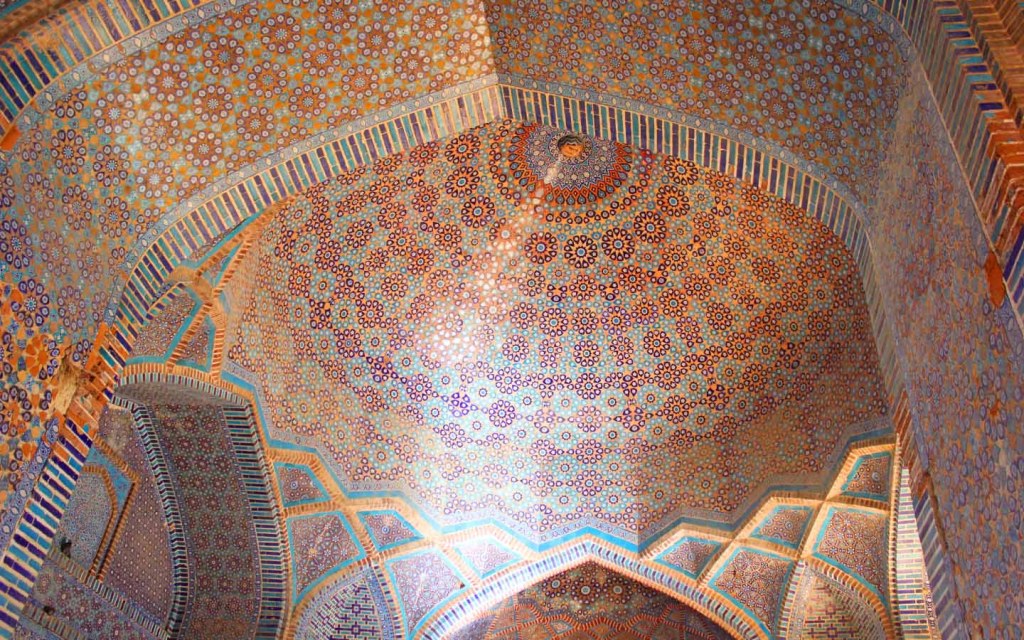
The main prayer hall is the jewel in the crown, with an exterior built using hues of blue, turquoise, and magenta tiles. The interior dome uses similar colours along with hints of red, white, and yellow to represent the heavenly skies above. Several of the smaller domes and arches around the courtyard also display amazing geometric patterns of brickwork which set this mosque apart from any other of the time. The brickwork is inconsistent with Mughal-era architecture but is reflective of the blend of construction styles that this mosque is most known for.
Renovations and Updates
The eastern section of the mosque was completed at a later date than the rest of the structure, in 1659, while further repairs were performed during the time of Emperor Aurangzeb in 1692 and by Murad Ali Khan Talpur in 1812. A few more renovations took place during the British rule, but the most recent ones were performed in the 1960s and 70s.
Unique Features of the Shah Jahan Mosque, Thatta
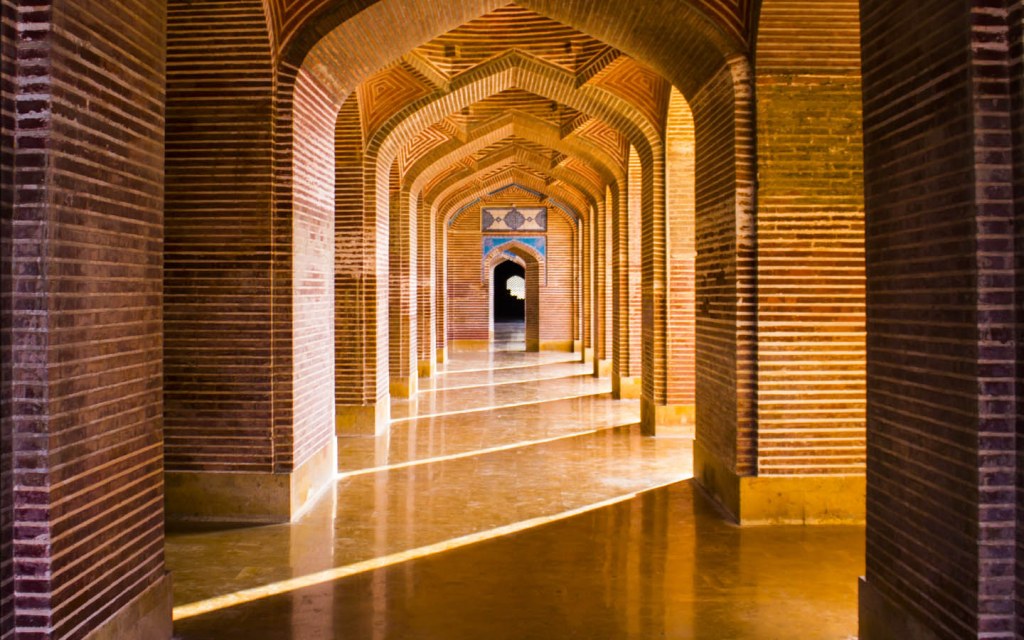
- No frescoes
- No minarets
- More than 90 domes
- Praying capacity for 20,000 individuals
- Natural ventilation throughout the interior
- Construction was completed using 9 lakh rupees of the time
- Prayers echo throughout the mosque without the use of technology
There are a number of Mughal-era mosques in Pakistan, but few can compare to this architectural feat that few people know of, and even fewer tend to visit. If you’re heading towards Makli or are on a road trip around the country, take out some time to witness the forgotten wonders of Thatta and the historical wonders of Sindh.
Email us at blog@zameen.com for any queries and keep following Zameen Blog for more informative posts on hidden gems from around the country.



